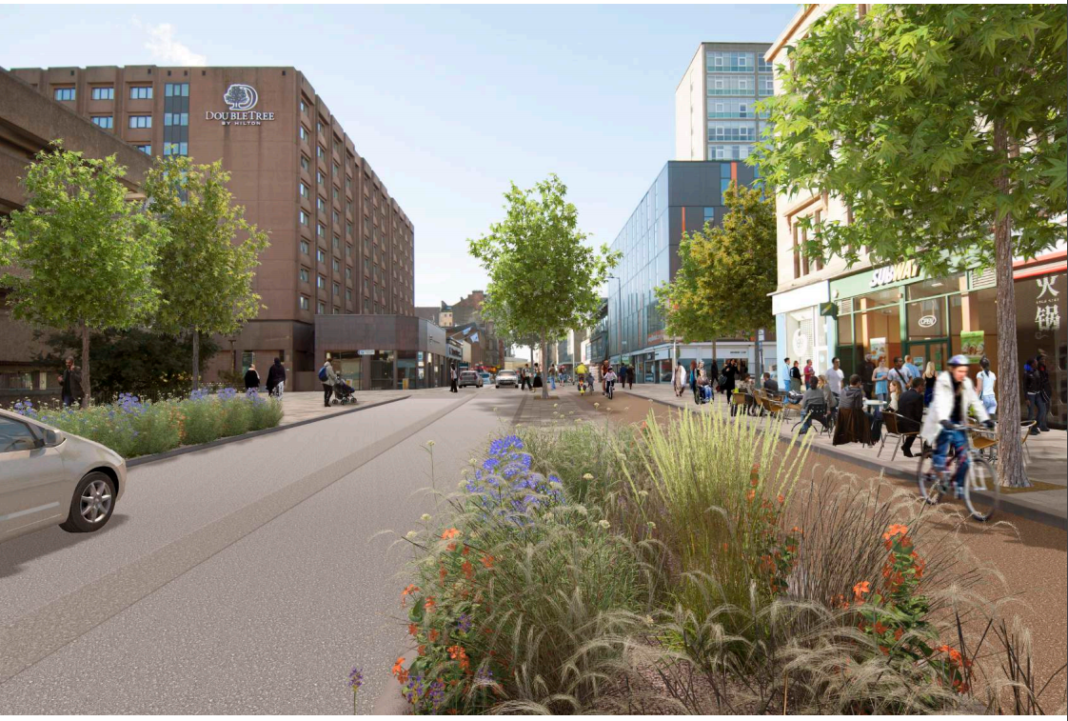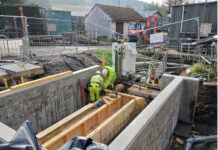
INCREASED pedestrian space and an upgraded streetscape will likely be the most noticeable benefits of the £115 million Glasgow Avenues project, but the City Deal-funded initiative will also take great strain off Glasgow’s drainage system.
The Glasgow City Council project will see 17 streets and adjacent areas, known as avenues, in the city centre transformed through an improved external environment that will rebalance traffic modes, introduce green infrastructure and seek to place people at the heart of the project and design strategy.
Leading the design team for Block ‘A’ of the project is Civic Engineers. Speaking to Project Scotland, Isla Jackson, a director at the firm, told of the rain gardens that are being installed along the Avenues – allowing for both an eco-friendly and aesthetically pleasing solution to the increasing extreme weather events which have hampered the city over recent years.
A rain garden consists of native plants contained within a basin that collects rainwater. “It’s a very simple concept,” Isla said. “What we’re trying to do is trap the water, clean it through a system and then either let it back out slowly, or in the future hopefully we can agree to have it directed to the River Clyde.”
Although creating a rain garden sounds like a straightforward task, the existing infrastructure of Glasgow presents challenges. “Argyle St is particularly challenging because there is a low level rail tunnel,” Isla explained. “So installing any sort of planting along that route is particularly challenging because of the interface with the infrastructure below.
“It is quite difficult. Fundamentally, the rail tunnel is an obstacle to connecting the drainage to the Clyde. All the surface water runs down the hill from Charing Cross towards the river, but then you have the very shallow tunnel which runs below the road surface.
“Combined with that you have the subway which runs underneath it – so at the junction of Argyle Street and Buchanan Street there is a huge amount of infrastructure, as well as utilities to contend with.”
Once the rain gardens are installed, a period of maintenance will ensue to ensure they can flourish to a point where they become established – just like any natural green space. Civic Engineers brought on board PhD students from the University of Strathclyde to devise a line-up of plants best suited to Glasgow’s environment – with a trial rain garden currently being tested in Washington Street.
Of course, as well as functioning as a drainage system, the gardens have to fit in with the street. Isla said, “They really have to perform a number of functions – they have a role in helping to create a more attractive street, they provide a verge for cyclists, increase biodiversity, and ultimately help ensure climate resilience.”
The long term plan for the rain gardens is to connect them to the River Clyde. If this is feasible, Isla said it would take ‘great’ stress off of Glasgow’s existing drainage system which has been tested through the extreme rainfall experienced in the past two years.










